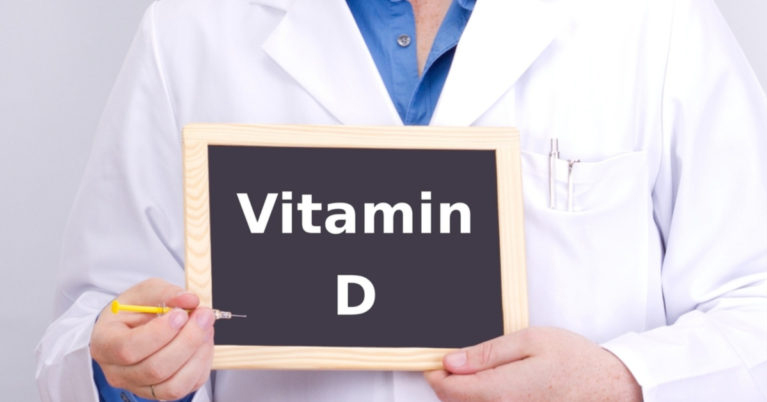
Do you know why we need Vitamin D? It does much more than helping your body absorb calcium for stronger bones. It can also help prevent cancer and is beneficial for heart health. Now I bet you’re wondering how much you need to take! Erica Mesirov, our resident Food Coach, explains in a recent blog on Vitamin D facts: how much we should take as a supplement and why we need it.
There’s so much buzz about vitamin D lately, and for good reason. It’s becoming more and more apparent that vitamin D is essential for not just building health, but staying healthy for years to come.
Bone Health
Vitamin D is massively important for your bone health. Sure, you can pop a bunch of calcium pills, hoping to avert osteoporosis but all that pill popping is a waste of money if your vitamin D levels aren’t optimized. That’s because your body needs it to absorb calcium and promote bone growth.
Cancer Prevention
Vitamin D may also possibly prevent cancer and lend to better outcomes for cancer patients. Epidemiological studies have examined the relationship between this wonder nutrient and cancer. And preliminary evidence shows that maintaining proper levels seem to improve cancer outcomes.
For instance, studies have shown there is an inverse effect between proper levels and breast cancer recurrence with early stage breast cancer. More research is needed but this initial information seems promising.
Heart Disease
There is also evidence that vitamin D is beneficial to your heart. As with cancer, we are still in the earlier stages of fully understanding the connection, but from what we do know, vitamin D is beneficial for cardiovascular health.
Vitamin D deficiency may be a risk factor for the heart in many ways. Think heart attacks and congestive heart failure. Plus it may play a role in proper blood pressure.
While we’re still looking for conclusive answers, the bottom line is you can’t lose by optimizing your vitamin D levels. It doesn’t take a big time commitment and it’s not prohibitively expensive.
Get to know your Vitamin D levels
The first step is to find where your levels stand. Most of us are naturally deficient, but you can never assume. There are a couple ways to get concrete information.
First, your doctor can easily order a blood test, The test that is administered is called 25(OH)D. The results will most likely be sent to your doctor.
You can also do a home test. That is, if you’re fine with pricking your own finger. You mail the blood test to a lab, and will be sent back your results.
Understanding the numbers
It’s important to understand your results because labs are different and set varying minimums. For ideal health, you want to exceed the minimum.
According to the Vitamin D council, a reading of about 50 ng/ml is ideal. Reading over 150 ng/ml can lead to toxicity. So, obviously, don’t go overboard. But, honestly, toxicity is hard to achieve.
And what if your blood tests reveal that your levels are less than ideal? Never fear. There are easy steps you can take.
Get daily sun exposure
The number one way your body gets this nutrient is by creating it from the sun. The more we spend time indoors, the more risk of deficiency rises. However, skin cancer is also a reality and sunblock also blocks Vitamin D.
To be safe, experts recommend getting about 20 minutes unblocked sun exposure daily. This can be done earlier in the day like 10:00 am. Or later in the day at about 3:00 pm. They don’t recommend getting sun exposure in the middle of the day when sun rays are at their most potent.
However, for many people this isn’t possible to do on a consistent basis. Or it won’t be enough to reach ideal levels. That why it’s nice that we have other options.
Vitamin D supplements
This can be one of the most important supplements you take. If you’re deficient, most doctors will recommend that you start by taking 1000 to 2000 IU daily. This is a good starting point.
But make sure to follow-up with another blood test because this may not be enough. It wasn’t for me. You need to keep building up until you reach a consistent level. You should, of course, do this with a doctor’s supervision, even though it is relatively safe.
Get it from food
The reality is that we mostly get Vitamin D from the sun. But there are a few foods that are good sources. These would be oily fishes like mackerel and salmon, liver, and egg yolks.
Many foods are fortified, meaning vitamins are added during processing. For example, breakfast cereals, milk, and orange juice are fortified with vitamin D. Boosting your readings from food alone will most likely be effective only if you need a small boost. Other than that, supplemental pills are your friend.
Get to know your Vitamin D
True story. When my mother finally tested herself, her doctor told her that her readings were the lowest she’d ever seen. This was when my mother was in a state of declining health. And this made me passionate about optimizing my own levels.
So if you haven’t tested yourself, now is a good time. Go to your doctor or order a home test. You can do something really small for your health that can have a large impact!

